- Home
- Diane Ackerman
A Natural History of the Senses Page 2
A Natural History of the Senses Read online
Page 2
A sailor stands on the deck of a ship, holding semaphore flags snug against his side. Suddenly he lifts them, swings both to the right in a take-it-away-man gesture, then turns, squats and sweeps the flags overhead. The sailor is a sense transmitter. Those who see and read him are the receptors. The flags are always the same, but how he moves them differs depending on the message, and his repertoire of gestures covers many contingencies. Change the image: A woman sits at a telegraph key and rattles Morse code along a wire. The dots and dashes are nerve impulses that can combine in elaborate ways to make their messages clear.
When we describe ourselves as “sentient” beings (from Latin sentire, “to feel,” from Indo-European sent-, “to head for,” “go”; hence to go mentally) we mean that we are conscious. The more literal and encompassing meaning is that we have sense perception. “Are you out of your senses!” someone yells in angry disbelief. The image of someone sprung from her body, roaming the world as a detached yearning, seems impossible. Only ghosts are pictured as literally being out of their senses, and also angels. Freed from their senses is how we prefer to say it, if we mean something positive—the state of transcendental serenity found in an Asiatic religion, for example. It is both our panic and our privilege to be mortal and sense-full. We live on the leash of our senses. Although they enlarge us, they also limit and restrain us, but how beautifully. Love is a beautiful bondage, too.
We need to return to feeling the textures of life. Much of our experience in twentieth-century America is an effort to get away from those textures, to fade into a stark, simple, solemn, puritanical, all-business routine that doesn’t have anything so unseemly as sensuous zest. One of the greatest sensuists* of all time—not Cleopatra, Marilyn Monroe, Proust, or any of the other obvious voluptuaries—was a handicapped woman with several senses gone. Blind, deaf, mute, Helen Keller’s remaining senses were so finely attuned that when she put her hands on the radio to enjoy music, she could tell the difference between the cornets and the strings. She listened to colorful, down-home stories of life surging along the Mississippi from the lips of her friend Mark Twain. She wrote at length about the whelm of life’s aromas, tastes, touches, feelings, which she explored with the voluptuousness of a courtesan. Despite her handicaps, she was more robustly alive than many people of her generation.
We like to think that we are finely evolved creatures, in suit-and-tie or pantyhose-and-chemise, who live many millennia and mental detours away from the cave, but that’s not something our bodies are convinced of. We may have the luxury of being at the top of the food chain, but our adrenaline still rushes when we encounter real or imaginary predators. We even restage that primal fright by going to monster movies. We still stake out or mark our territories, though sometimes now it is with the sound of radios. We still jockey for position and power. We still create works of art to enhance our senses and add even more sensations to the brimming world, so that we can utterly luxuriate in the spectacles of life. We still ache fiercely with love, lust, loyalty, and passion. And we still perceive the world, in all its gushing beauty and terror, right on our pulses. There is no other way. To begin to understand the gorgeous fever that is consciousness, we must try to understand the senses—how they evolved, how they can be extended, what their limits are, to which ones we have attached taboos, and what they can teach us about the ravishing world we have the privilege to inhabit.
To understand, we have to “use our heads,” meaning our minds. Most people think of the mind as being located in the head, but the latest findings in physiology suggest that the mind doesn’t really dwell in the brain but travels the whole body on caravans of hormone and enzyme, busily making sense of the compound wonders we catalogue as touch, taste, smell, hearing, vision. What I wish to explore in this book is the origin and evolution of the senses, how they vary from culture to culture, their range and reputation, their folklore and science, the sensory idioms we use to speak of the world, and some special topics that I hope will exhilarate other sensuists as they do me, and cause less-extravagant minds at least to pause a moment and marvel. Inevitably, a book such as this becomes an act of celebration.
*Someone who rejoices in sensory experience. A sensualist is someone concerned with gratifying his sexual appetites.
Smell
Smell is a potent wizard that transports us across thousands of miles and all the years we have lived. The odors of fruits waft me to my southern home, to my childhood frolics in the peach orchard. Other odors, instantaneous and fleeting, cause my heart to dilate joyously or contract with remembered grief. Even as I think of smells, my nose is full of scents that start awake sweet memories of summers gone and ripening fields far away.
Helen Keller
THE MUTE SENSE
Nothing is more memorable than a smell. One scent can be unexpected, momentary, and fleeting, yet conjure up a childhood summer beside a lake in the Poconos, when wild blueberry bushes teemed with succulent fruit and the opposite sex was as mysterious as space travel; another, hours of passion on a moonlit beach in Florida, while the night-blooming cereus drenched the air with thick curds of perfume and huge sphinx moths visited the cereus in a loud purr of wings; a third, a family dinner of pot roast, noodle pudding, and sweet potatoes, during a myrtle-mad August in a midwestern town, when both of one’s parents were alive. Smells detonate softly in our memory like poignant land mines, hidden under the weedy mass of many years and experiences. Hit a tripwire of smell, and memories explode all at once. A complex vision leaps out of the undergrowth.
People of all cultures have always been obsessed with smell, sometimes applying perfumes in Niagaras of extravagance. The Silk Road opened up the Orient to the western world, but the scent road opened up the heart of Nature. Our early ancestors strolled among the fruits of the earth with noses vigilant and precise, following the seasons smell by smell, at home in their brimming larder. We can detect over ten thousand different odors, so many, in fact, that our memories would fail us if we tried to jot down everything they represent. In “The Hound of the Baskervilles,” Sherlock Holmes identifies a woman by the smell of her notepaper, pointing out that “There are seventy-five perfumes, which it is very necessary that a criminal expert should be able to distinguish from each other.” A low number, surely. After all, anyone “with a nose for” crime should be able to sniff out culprits from their tweed, India ink, talcum powder, Italian leather shoes, and countless other scented paraphernalia. Not to mention the odors, radiant and nameless, which we decipher without even knowing it. The brain is a good stagehand. It gets on with its work while we’re busy acting out our scenes. Though most people will swear they couldn’t possibly do such a thing, studies show that both children and adults, just by smelling, are able to determine whether a piece of clothing was worn by a male or a female.
Our sense of smell can be extraordinarily precise, yet it’s almost impossible to describe how something smells to someone who hasn’t smelled it. The smell of the glossy pages of a new book, for example, or the first solvent-damp sheets from a mimeograph machine, or a dead body, or the subtle differences in odors given off by flowers like bee balm, dogwood, or lilac. Smell is the mute sense, the one without words. Lacking a vocabulary, we are left tongue-tied, groping for words in a sea of inarticulate pleasure and exaltation. We see only when there is light enough, taste only when we put things into our mouths, touch only when we make contact with someone or something, hear only sounds that are loud enough. But we smell always and with every breath. Cover your eyes and you will stop seeing, cover your ears and you will stop hearing, but if you cover your nose and try to stop smelling, you will die. Etymologically speaking, a breath is not neutral or bland—it’s cooked air; we live in a constant simmering. There is a furnace in our cells, and when we breathe we pass the world through our bodies, brew it lightly, and turn it loose again, gently altered for having known us.
A MAP OF SMELL
Breaths come in pairs, except at two times in our lives—the begi
nning and the end. At birth, we inhale for the first time; at death, we exhale for the last. In between, through all the lather of one’s life, each breath passes air over our olfactory sites. Each day, we breathe about 23,040 times and move around 438 cubic feet of air. It takes us about five seconds to breathe—two seconds to inhale and three seconds to exhale—and, in that time, molecules of odor flood through our systems. Inhaling and exhaling, we smell odors. Smells coat us, swirl around us, enter our bodies, emanate from us. We live in a constant wash of them. Still, when we try to describe a smell, words fail us like the fabrications they are. Words are small shapes in the gorgeous chaos of the world. But they are shapes, they bring the world into focus, they corral ideas, they hone thoughts, they paint watercolors of perception. Truman Capote’s In Cold Blood chronicles the mischief of two murderers who collaborated on a particularly nasty crime. A criminal psychologist, trying to explain the event, observed that neither one of them would have been capable of the crime separately, but together they formed a third person, someone who was able to kill. I think of metaphors as a more benign but equally potent example of what chemists call hypergolic. You can take two substances, put them together, and produce something powerfully different (table salt), sometimes even explosive (nitroglycerine). The charm of language is that, though it’s human-made, it can on rare occasions capture emotions and sensations which aren’t. But the physiological links between the smell and language centers of the brain are pitifully weak. Not so the links between the smell and the memory centers, a route that carries us nimbly across time and distance. Or the links between our other senses and language. When we see something, we can describe it in gushing detail, in a cascade of images. We can crawl along its surface like an ant, mapping each feature, feeling each texture, and describing it with visual adjectives like red, blue, bright, big, and so on. But who can map the features of a smell? When we use words such as smoky, sulfurous, floral, fruity, sweet, we are describing smells in terms of other things (smoke, sulfur, flowers, fruit, sugar). Smells are our dearest kin, but we cannot remember their names. Instead we tend to describe how they make us feel. Something smells “disgusting,” “intoxicating,” “sickening,” “pleasurable,” “delightful,” “pulse-revving,” “hypnotic,” or “revolting.”
My mother once told me about a drive she and my father took through the Indian River orange groves in Florida when the trees were thick with blossom and the air drenched with fragrance. It overwhelmed her with pleasure. “What does it smell like?” I asked. “Oh, it’s delightful, an intoxicating delightful smell.” “But what does that smell smell like?” I asked again. “Like oranges?” If so, I might buy her some eau de cologne, which has been made of neroli (attar of oranges), bergamot (from orange rind), and other minor ingredients since its creation in the eighteenth century, when it was the favorite of Madame du Barry. (Although the use of neroli itself as a perfume probably goes back to the days of the Sabines.) “Oh, no,” she said with certainty, “not at all like oranges. It’s a delightful smell. A wonderful smell.” “Describe it,” I begged. And she threw up her hands in despair.
Try it now. Describe the smell of your lover, your child, your parent. Or even one of the aromatic clichés most people, were they blindfolded, could recognize by smell alone: a shoe store, a bakery, a church, a butcher shop, a library. But can you describe the smell of your favorite chair, of your attic or your car? In The Place in Flowers Where Pollen Rests, novelist Paul West writes that “blood smells like dust.” An arresting metaphor, one that relies on indirection, as metaphors of smell almost always do. Another engagingly subjective witness is novelist Witold Gombrowicz, who, in the first volume of his diary, recalls having breakfast at the Hermitage “with A. and his wife.… The food smells of, forgive me, a very luxurious water closet.” I presume it was the fried kidneys for breakfast he didn’t care for, even if they were expensive and high-class kidneys. For the cartography of smell, we need sensual mapmakers to sketch new words, each one precise as a landform or cardinal direction. There should be a word for the way the top of an infant’s head smells, both talcumy and fresh, unpolluted by life and diet. Penguins smell starkly penguin, a smell so specific and unique that one succinct adjective should capture it. Pinguid, which means oily, won’t do. Penguinine sounds like a mountain range. Penguinlike is the usual model, but it just clutters up the language and labels without describing. If there are words for all the pastels in a hue—the lavenders, mauves, fuchsias, plums, and lilacs—who will name the tones and tints of a smell? It’s as if we were hypnotized en masse and told to selectively forget. It may be, too, that smells move us so profoundly, in part, because we cannot utter their names. In a world sayable and lush, where marvels offer themselves up readily for verbal dissection, smells are often right on the tip of our tongues—but no closer—and it gives them a kind of magical distance, a mystery, a power without a name, a sacredness.
OF VIOLETS AND NEURONS
Violets smell like burnt sugar cubes that have been dipped in lemon and velvet, I might offer, doing what we always do: defining one smell by another smell or another sense. In a famous letter, Napoleon told Josephine “not to bathe” during the two weeks that would pass before they met, so that he could enjoy all her natural aromas. But Napoleon and Josephine also adored violets. She often wore a violet-scented perfume, which was her trademark. When she died in 1814, Napoleon planted violets at her grave. Just before his exile on St. Helena, he made a pilgrimage to it, picked some of the violets, and entombed them in a locket, which he wore around his neck; they stayed there until the end of his life. The streets of nineteenth-century London were full of poor girls selling small bouquets of violets and lavender. In fact, Ralph Vaughan Williams’s London Symphony includes an orchestral interpretation of the flower-girl’s cry. Violets resist the perfumer’s art and always have. It is possible to make a high-quality perfume from violets, but it’s exceedingly difficult and expensive. Only the wealthiest people could afford it; but there have always been empresses, dandies, trend setters, and extravagants enough to keep perfumers busy. The thing about violets, which many people find cloying to the point of nausea, is that no response to them lasts long; as Shakespeare put it, they’re:
Forward, not permanent, sweet, not lasting,
The perfume and suppliance of a minute.
Violets contain ionone, which short-circuits our sense of smell. The flower continues to exude its fragrance, but we lose the ability to smell it. Wait a minute or two, and its smell will blare again. Then it will fade again, and so on. How like Josephine, a woman of full-bodied if occasionally recondite sensuality, to choose as her trademark a scent that assaults the nose with a dam-burst of odor one second, and the next leaves the nose virginal, only to rampage yet again. No scent is more flirtatious. Appearing, disappearing, appearing, disappearing, it plays hide-and-seek with our senses, and there’s no way to get too much of it. The violet so besotted the ancient Athenians that they chose it as their city’s official flower and symbol. Victorian women liked to sweeten their breath with cachous, violet drops, especially if they’d been drinking. As I write this, I have been tasting a roll of “Choward’s Violet” pastilles, “A delicious confection/Fragrance that refreshes,” and the sweet, pungently musty ooze of violets has nearly swamped me. On the other hand, in the Amazon I brewed a pot of casca preciosa, a fragrant relative of the sassafras, whose steeped bark soon scented my face, my hair, my clothes, my room, and my psyche with hot violets of exquisite subtlety. If violets have thrilled, obsessed, repelled, and in other ways addled us for centuries, why is it so hard to describe them except indirectly? Do we smell indirectly? Not at all.
Smell is the most direct of all our senses. When I hold a violet to my nose and inhale, odor molecules float back into the nasal cavity behind the bridge of the nose, where they are absorbed by the mucosa containing receptor cells bearing microscopic hairs called cilia. Five million of these cells fire impulses to the brain’s olfactory bulb or smell c
enter. Such cells are unique to the nose. If you destroy a neuron in the brain, it’s finished forever; it won’t regrow. If you damage neurons in your eyes or ears, both organs will be irreparably damaged. But the neurons in the nose are replaced about every thirty days and, unlike any other neurons in the body, they stick right out and wave in the air current like anemones on a coral reef.
Found at the upper end of each nostril, the olfactory regions are yellow, richly moist, and full of fatty substances. We think of heredity as ordaining how tall one will be, the shape of the face, and the color of hair. Heredity also determines the shade of yellow of the olfactory area. The deeper the shade, the keener and more acute the sense of smell. Albinos have a poor sense of smell. Animals, which can smell with beatific grandeur, have dark-yellow olfactory regions; ours are light yellow. The fox’s is reddish brown, the cat’s an intense mustard brown. One scientist reports that dark-skinned men have darker olfactory regions and should therefore have more sensitive noses. When the olfactory bulb detects something—during eating, sex, an emotional encounter, a stroll through the park—it signals the cerebral cortex and sends a message straight into the limbic system, a mysterious, ancient, and intensely emotional section of our brain in which we feel, lust, and invent. Unlike the other senses, smell needs no interpreter. The effect is immediate and undiluted by language, thought, or translation. A smell can be overwhelmingly nostalgic because it triggers powerful images and emotions before we have time to edit them. What you see and hear may quickly fade into the compost heap of short-term memory, but, as Edwin T. Morris points out in Fragrance, “there is almost no short-term memory with odors.” It’s all long term. Furthermore, smells stimulate learning and retention. “When children were given olfactory information along with a word list,” Morris noted, “the list was recalled much more easily and better retained in memory than when given without the olfactory cues.” When we give perfume to someone, we give them liquid memory. Kipling was right: “Smells are surer than sights and sounds to make your heart-strings crack.”

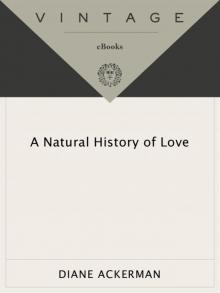 A Natural History of Love
A Natural History of Love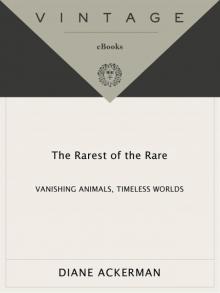 The Rarest of the Rare: Vanishing Animals, Timeless Worlds
The Rarest of the Rare: Vanishing Animals, Timeless Worlds The Zookeeper's Wife: A War Story
The Zookeeper's Wife: A War Story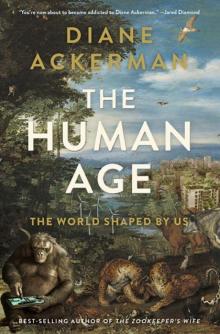 The Human Age: The World Shaped by Us
The Human Age: The World Shaped by Us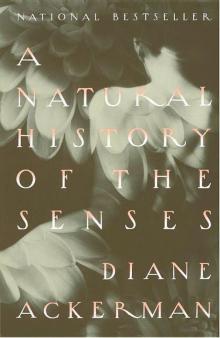 A Natural History of the Senses
A Natural History of the Senses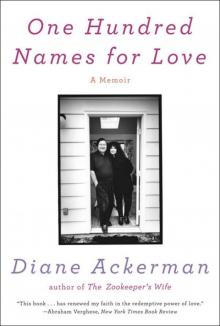 One Hundred Names for Love: A Memoir
One Hundred Names for Love: A Memoir The Rarest of the Rare
The Rarest of the Rare